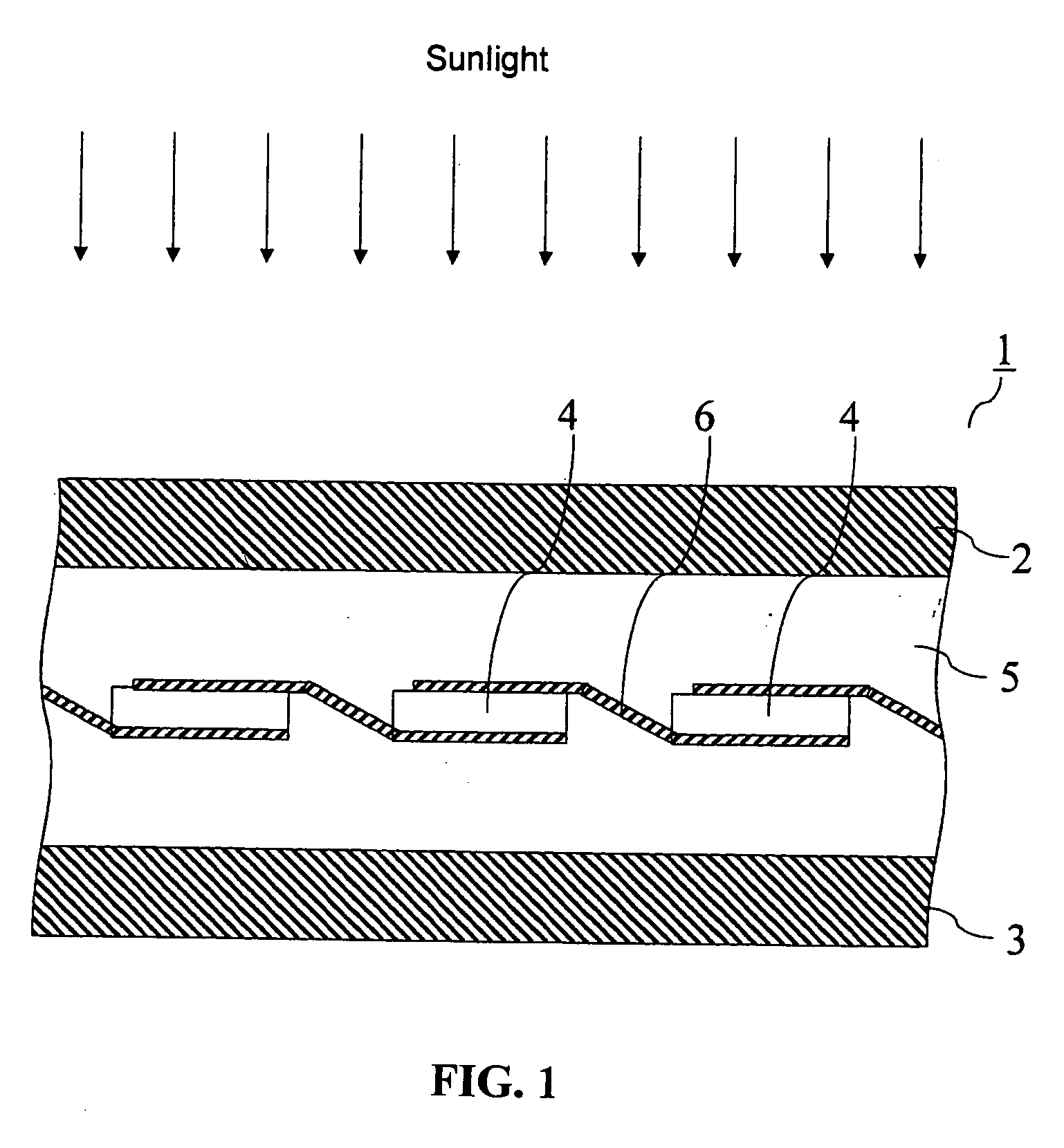Solar cell module
a solar cell and module technology, applied in the field of solar cell modules, can solve the problems of more complicated heating steps of glass materials, disadvantages of covering glass in promoting weight reduction when mounted on a vehicle, and high cost, and achieve excellent heat resistance, low linear expansion coefficient, and weather resistance.
- Summary
- Abstract
- Description
- Claims
- Application Information
AI Technical Summary
Benefits of technology
Problems solved by technology
Method used
Image
Examples
first embodiment
of Glass Filler-Containing Thermoplastic Resin Molded Product
[0037]In a preferred first embodiment of the present invention, as the glass filler-containing thermoplastic resin molded product, used is a glass filler-containing amorphous polyamide resin molded product including an amorphous polyamide resin and a glass filler, and having a difference of refractive indices between the amorphous polyamide resin and the glass filler of 0.002 or less with respect to light having a wavelength of 589 nm. The glass filler-containing amorphous polyamide resin molded product has transparency, is thin and light, and is capable of being molded into a curve shape, and furthermore, has excellent weather resistance, so an excellent front surface cover member can be provided. The glass filler-containing amorphous polyamide resin molded product is obtained by molding a resin component containing an amorphous polyamide resin and a resin composition containing a glass filler. Hereinafter, the glass fill...
second embodiment
of Glass Filler-Containing Thermoplastic Resin Molded Product
[0067]In a preferred second embodiment of the present invention, as the glass filler-containing thermoplastic resin molded product, used is a glass filler-containing polycarbonate resin molded product including a polycarbonate resin and a glass filler, and having a difference of refractive indices between the polycarbonate resin and the glass filler of 0.001 or less with respect to light having a wavelength of 589 nm. The glass filler-containing polycarbonate resin molded product has transparency, is thin and light, and is capable of being molded in a curve shape, so an excellent front surface cover member can be provided. As the glass filler and polycarbonate resin used in the glass filler-containing polycarbonate resin molded product, those described in Japanese Patent No. 3905120 and Japanese Patent Application Laid-open No. 2007-153729 can be used. Here, the outline of the polycarbonate resin and glass filler is briefl...
examples
[0122]Hereinafter, the present invention is described in detail by way of examples. However, those examples are intended to describe embodiments of the present invention and are not intended to limit the scope of the present invention.
[0123](Glass Fiber)
[0124]Glass Fibers (GF1 to GF4) were prepared in the compositions (mass %) as shown in Table 1 below.
[0125]The glass fiber was spun to have a fiber diameter of 13 μm by a conventionally known method, and as a binder, aminosilane and urethane were attached thereto so as to be 0.5 mass %. Table 1 shows the compositions of the glass fibers, and refractive indices with respect to light having a wavelength of 589 nm (hereinafter, referred to as nD), with respect to light having a wavelength of 486 nm (hereinafter, referred to as nF), and with respect to light having a wavelength of 656 nm (hereinafter, referred to as nC). The refractive indices were measured by the immersion liquid method by B method disclosed in JIS-K7142.
TABLE 1mass %GF...
PUM
 Login to View More
Login to View More Abstract
Description
Claims
Application Information
 Login to View More
Login to View More - R&D
- Intellectual Property
- Life Sciences
- Materials
- Tech Scout
- Unparalleled Data Quality
- Higher Quality Content
- 60% Fewer Hallucinations
Browse by: Latest US Patents, China's latest patents, Technical Efficacy Thesaurus, Application Domain, Technology Topic, Popular Technical Reports.
© 2025 PatSnap. All rights reserved.Legal|Privacy policy|Modern Slavery Act Transparency Statement|Sitemap|About US| Contact US: help@patsnap.com


